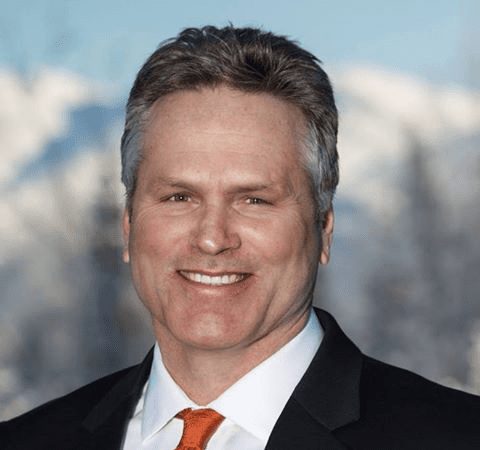Rack up another empty seat on the Alaska debate stage for Mike Dunleavy.
The Republican candidate for Alaska governor bailed out of Kodiak’s traditional fisheries debate – after saying he’d show up.
“We plan on being there,” Dunleavy said on public radio’s statewide Talk of Alaska call-in show on Aug. 31. But from then on, there was silence from the Dunleavy campaign as Kodiak organizers struggled to plan the Oct. 22 event that is broadcast live statewide on radio and television.
Days before the event, after weeks of unreturned phone calls and emails, organizers finally learned that Dunleavy would not be attending.
“Mike is unfortunately not going to be able to attend the debate as he will be visiting with Alaskans in Barrow. We wish you the best with you (sic) event,” wrote Gina Ritacco, deputy director of scheduling & events, in an October 16 email to the Kodiak Chamber of Commerce.
The conflicting trip to Barrow was posted on the Dunleavy event calendar that same day.
“Certainly, it makes us in Kodiak feel like even though the fishing industry is so important to Alaska, it may not be that important to him,” said Frank Schiro, executive director of the Kodiak Chamber of Commerce, which has hosted the debate since 1991.
Shiro added that he was not surprised.
“People had predicted from the beginning that it might not be to his advantage to come here. I think he believes he doesn’t need to pay attention to people down here and will walk into office anyway,” he said,
“We gave him two months to schedule it,” Schiro added. “The other two candidates for governor responded immediately and Dunleavy’s lag time made our planning extremely difficult.”
Since late March Dunleavy’s calendar shows that he has participated in a debate on rural issues in Naknek in early June and visited Juneau and Ketchikan. Besides that, to date he had not visited any coastal communities beyond the Kenai Peninsula. Dunleavy also has not responded
The seafood industry is Alaska’s largest private employer and second only to oil in the tax revenues it puts into state coffers. Seafood also is Alaska’s top export by far. Dunleavy has missed an opportunity to share his views and vision for Alaska’s oldest industry to a statewide audience.
Dunleavy is the first major candidate for Alaska governor or U.S. Congress to snub the Kodiak fisheries debate in nearly 30 years.
“We aren’t supporting a particular candidate,” Schiro said. “Our position is we want to have an informed public. It’s a shame that Mr. Dunleavy has chosen to not be a part of that.”
According to the North Pacific Anadromous Fish Commission (NPAFC) which has tracked salmon abundances and catches for five countries for more than 25 years, salmon catches throughout the N. Pacific remain near all-time highs and Alaska’s take tops them all.
The NPAFC also tracks releases of hatchery salmon from Canada, Japan, Korea, Russia and the U.S. The five countries released just over 5 billion fish in 2017, similar to numbers over three decades.
U.S. hatcheries released the most salmon at 37 percent, followed by Japan at 35 percent and Russia at 21 percent. Chum salmon made up 64 percent of all hatchery releases, followed by pinks at 25 percent.
Ugly crab is better
In the Bering Sea fisheries, crabs with ugly shells can comprise up to 30 percent of a catch at certain times of year and crab molting cycles. Shells that are discolored, scarred or covered with barnacles can be a turn off to customers, and fishermen get paid less for the so-called No. 2’s or dirty crab catch.
Alaska crabbers aim to get more value from the crab by convincing customers that it’s what is on the inside that counts in a Get Ugly campaign.
“We’re promoting it in a new way,” said Jeremy Woodrow, communications director at the Alaska Seafood Marketing Institute. “We’re educating retail and food service professionals that once you get inside the shell it’s no different. And a lot of times these ugly crab are older and have greater meat fill so they are actually a better value often at a lower price.”
The ugly crab campaign is modeled after similar “food enhancement” programs underway by farmers that is designed to reduce food waste and improve sustainability practices.
“Whether it’s produce or proteins, consumers are becoming more educated and definitely more thoughtful about where their food comes from. This dovetails right into that same mindset that it’s OK that your food might look a little different, it’s all about how it tastes and what it does for you as a person,” Woodrow said.















